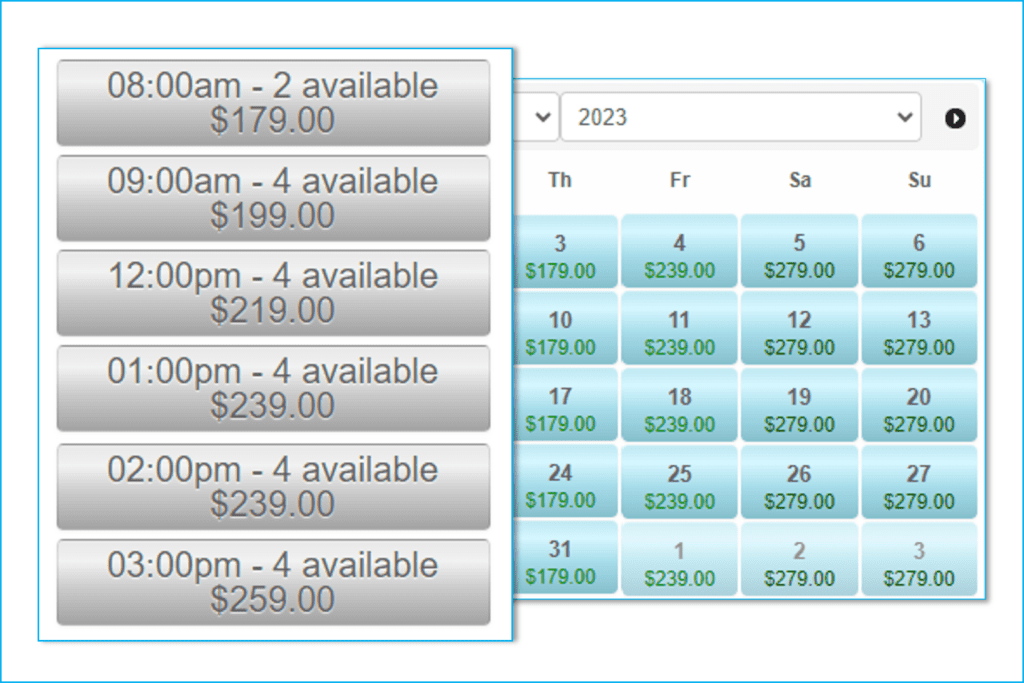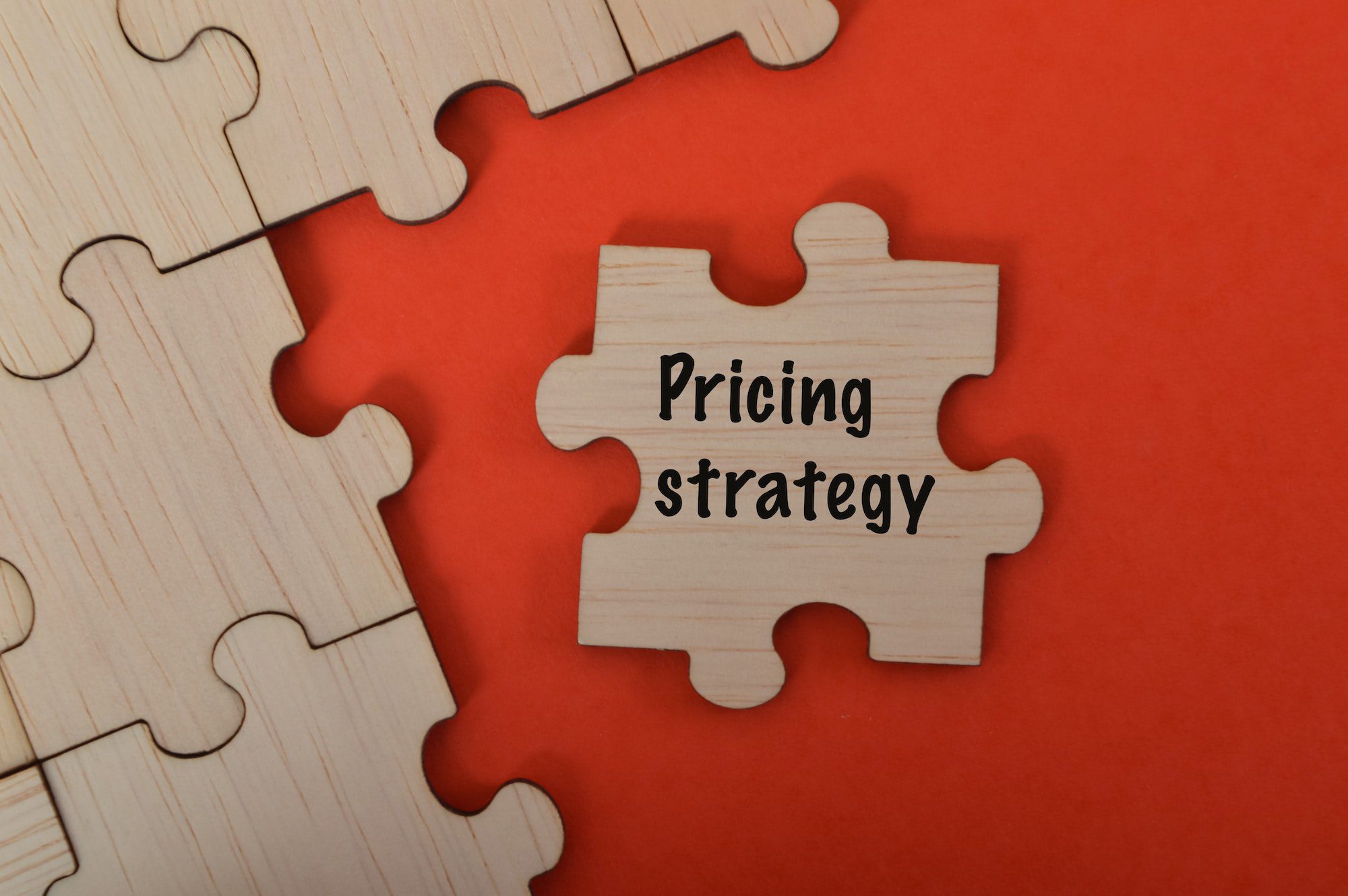Skydiving, an adrenaline-pumping adventure, offers a business opportunity that is as thrilling as the experience itself. However, even with its inherent appeal, running a successful skydiving business is not just about offering an exhilarating experience—it’s also about strategic pricing.
Every detail matters in the competitive skydiving industry, especially when it comes to pricing your services. Setting the right prices can mean the difference between soaring profits and barely staying aloft. It’s about finding a balance that attracts customers, covers your costs, and leaves room for profit. This is where strategy comes into play, and one size certainly does not fit all.
In this guide, we dive into the dynamics of effective pricing strategies for your skydiving business, focusing specifically on tandem skydiving. We’ll explore the power of providing a variety of options, the benefits of waterfall pricing in competitive markets, how to intelligently position your pricing against competitors, and the revenue-enhancing potential of photo/video packages.
No matter if you’re new to the skydiving industry or an established player seeking to optimize your pricing, this guide is packed with insights that can help you enhance your profitability and attract more tandem bookings. So, buckle up, and let’s take this leap together!
The Power of Providing Options
When it comes to skydiving, not all thrill-seekers are created equal. Some are seeking the highest rush possible, while others may be a bit more apprehensive, preferring a less intense experience for their first jump.
Offering a range of options caters to this varied clientele, making your dropzone more appealing to a broader audience. It also provides the ability to offer a lower-priced option for those who are price-averse.
Why 3 Really is the Magic Number
Having at least three options for tandem skydives can significantly enhance your sales. Why three? It’s rooted in consumer psychology. When faced with only two options, people often struggle to make a decision, but three options provide a comfortable middle ground that allows customers to feel more in control of their choice.
For instance, consider offering a low-altitude jump, a regular jump, and a high-altitude jump (if your dropzone has that capability). Here’s our recommendation:
- Low-Altitude Skydive (8,000ft – 10,000ft): Offering this lower-altitude option is a good way to bring in customers who are more price-sensitive. And based on the data we’ve collected from dropzones across the country, there’s a high probability that once on-site, the customer will opt to upgrade to a regular-altitude skydive.
- Standard Skydive (10,000ft-14,500ft): This is your everyday tandem skydive and the one you’re most likely to sell. This is the option that should be automatically selected when someone goes to book a skydive.
- High-Altitude Skydive (14,500ft-18,000ft): If your dropzone has the ability to offer a high-altitude skydive, we say go for it! This can be a great way to bring people back for a 2nd skydive who want an even bigger thrill! It should be priced significantly higher than a standard skydive for 2 reasons: First, because it simply costs more to conduct one, and second, because it helps the price of the standard skydive seem lower.
By giving your customers options, you’re not only addressing a wider market, but you’re also allowing them to tailor their skydiving experience to their pricing comfort level and thrill-seeking desires. This approach can also significantly enhance customer satisfaction, leading to more bookings and even repeat business.
Drip, Drip, Waterfall Pricing
When navigating the turbulent skies of a competitive market, waterfall pricing is a savvy strategy to have up your sleeve. Waterfall pricing is a tiered pricing strategy that offers different prices for the same product or service depending on certain factors, such as time or demand.
Applying this strategy to your dropzone could look like this: you offer cheaper prices during less desirable timeslots or days (like weekdays or early mornings) and elevate prices during peak hours or on weekends. The objective is twofold – to incentivize bookings during slower periods while capitalizing on high demand times.

The benefits of waterfall pricing are numerous. It can increase overall bookings by enticing cost-sensitive customers during off-peak periods, thus optimizing capacity utilization. It also allows you to maintain premium pricing for those willing to pay more for peak slots, thereby maximizing revenue.
However, it’s important to implement this strategy with thoughtfulness. For instance, the price difference between off-peak and peak times should be substantial enough to motivate customers to consider off-peak slots, but not so large that it devalues the experience or leads to dissatisfaction among those who pay the premium price.
In competitive markets, waterfall pricing can give your dropzone an edge by creating appealing options for a wider variety of customers. It’s a winning strategy that enhances profitability while maintaining customer satisfaction across all skydiving experiences.
The Downfalls of Waterfall Pricing
While waterfall pricing has the potential to enhance profitability and capacity utilization, it is not without its pitfalls. Understanding these is vital to implementing the strategy effectively and maintaining customer satisfaction.
One of the major potential downsides is customer dissatisfaction due to perceived inequities in pricing. For instance, a customer who booked a premium slot but couldn’t jump until a cheaper timeslot might feel slighted. It’s important to manage such scenarios delicately to preserve customer relationships and protect your dropzone’s reputation.
Additionally, the implementation of waterfall pricing can present logistical challenges for your team. Different pricing for different times can make bookings more complex to manage, adding extra work for your office and manifest staff. It might require new processes or software to handle the complexities efficiently.
It’s also essential to note that waterfall pricing is not a one-size-fits-all solution. This strategy is particularly beneficial in very competitive markets or for dropzones that are in active growth mode. However, it may not be the best fit for more established dropzones where consistent pricing might be more appreciated by their regular customers.
So, while waterfall pricing can be a powerful tool in the right circumstances, it requires careful consideration of your specific market context, customer base, and operational capacities. Like any strategy, it’s effectiveness can only be truly measured with thoughtful execution and continuous evaluation.
Evaluating the Suitability of Waterfall Pricing
When considering whether to implement waterfall pricing in your dropzone, it’s essential to evaluate its potential impact based on your specific circumstances. Here are some indicators that can guide you:
When Waterfall Pricing Might Be a GOOD Idea…
- You operate in a highly competitive market where price differentiation can give you a competitive edge.
- Your dropzone is in active growth mode and needs to attract new customers.
- You experience significant variation in demand across different times and days, and want to better utilize your capacity during off-peak times.
- Your customers show price sensitivity, suggesting that they might be incentivized by lower prices during less desirable timeslots.
When Waterfall Pricing Might Be a BAD Idea…
- Your dropzone is well-established with a loyal customer base accustomed to consistent pricing.
- The logistical challenges of implementing variable pricing outweigh the potential benefits, causing undue stress to your office and manifest team.
- Customer perception is a concern, and there is a risk of negative responses from those who might have to jump during cheaper timeslots despite booking a premium slot.
- The demand for your services is consistent across different times and days, reducing the potential benefits of variable pricing.
These guidelines can help you decide if waterfall pricing is the right strategy for your dropzone, always remembering that what works best is often unique to each business and market context.
Price Positioning Against Competitors
In a competitive industry like skydiving, pricing (obviously) plays a critical role. Keeping a close eye on the pricing tactics of your competitors is not just important; it’s essential. Monitoring how they price their services will give you a good benchmark and help you understand your market position better.
One fundamental rule in competitive pricing is to avoid underselling by more than $20 on at least one of your skydiving options. While lower prices may attract customers, extreme undercutting could instigate a price war. This situation could ultimately devalue the overall market and affect everyone’s bottom line.
Positioning your prices against competitors involves striking a balance. If you price too high, you risk appearing unaffordable and pushing potential jumpers to competitors. Conversely, if your prices are consistently lower, customers might question the quality of your service. Ideally, you want your dropzone to be seen as offering great value – high-quality service at a fair, competitive price.
It’s important to remember that your competition isn’t only about price. You’re also competing on quality, customer experience, and the unique features your dropzone offers. Use your competitive pricing strategy as a part of the bigger picture, emphasizing the unique value and unforgettable experience customers will get at your dropzone.
Profit Maximization with Photo/Video Options
Offering a range of 3-5 photo/video options can be a powerful strategy to maximize your profits. This approach caters to different customer preferences and budgets. Some may just want a few photos as a keepsake, while others might desire a fully edited video with music, photos, and the works. By providing a spectrum of choices, you’re likely to appeal to a wider range of customers, thus boosting your overall revenue.
Potential photo/video options could include simple photo packages, raw footage, edited videos, and premium packages that combine all these elements. When setting your prices, consider both the production costs and the perceived value to the customer. Remember, these keepsakes are not just about preserving memories; they’re also a marketing tool. Each shared photo or video is a personal endorsement, promoting your dropzone to a potential new customer.
In summary, smartly priced photo and video offerings don’t just capture memories; they capture additional revenue and provide invaluable word-of-mouth marketing. It’s a win-win situation for your dropzone and your customers!
Wrapping it Up
In this competitive industry, pricing strategies can make a significant difference to your dropzone’s bottom line. By offering a range of skydive options and photo/video packages, you can cater to diverse customer needs and increase overall revenue. Stay alert to your competitors’ pricing, ensuring you remain competitive without drastically undercutting your prices. Waterfall pricing, while presenting a few challenges, can be an effective strategy in specific scenarios—especially for dropzones in competitive markets or active growth phases.
However, remember, every dropzone is unique. What works for one may not work for all. It’s essential to monitor your pricing strategies’ performance, solicit customer feedback, and remain flexible. This way, you can continually adjust and refine your pricing to suit your particular dropzone and its evolving needs.
Pricing is an art. It’s about finding the sweet spot that values your service fairly and appeals to your customers. So, experiment, learn, and adapt—and most importantly, skydive confidently into a profitable future.
